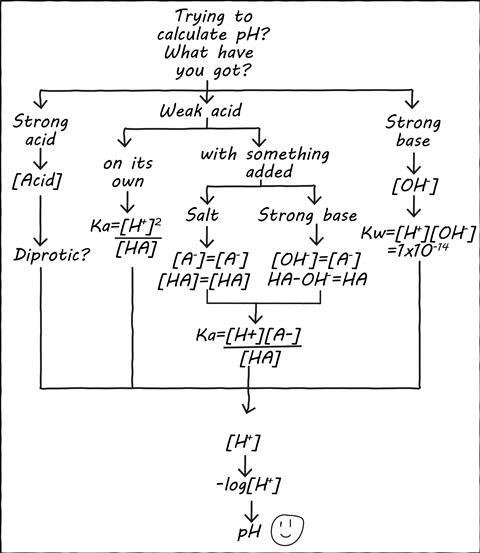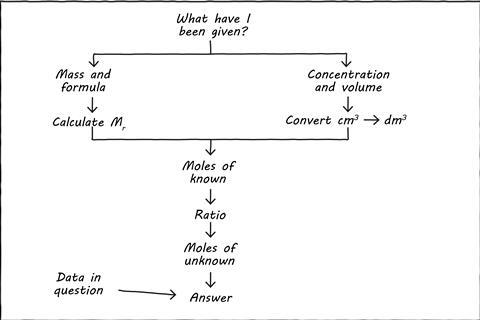Ensure problem-solving techniques take root so students reach the right answer every time
I am sure we’ve all been there. We teach the topic well and students can answer the questions in lessons. Then we set them free to work on a range of exam questions independently and they are unable to access them. They don’t pick the right technique to solve each problem even though they can do it easily when told which technique to use.
When students are taught concepts, especially post-16 chemistry concepts, they can achieve a high success rate in isolation. But when given synoptic questions, like in exams, their mastery seems to disappear. They can’t see the wood for the trees.
I’ve noticed this is incredibly common when teaching on two topics: amount of substance and acids and bases. When teaching moles, we can ensure students are able to perform each type of calculation, but then they often struggle to choose the right one when left to their own devices. The same problem occurs with acids.
A classic solution to this dilemma is to assure the frustrated student it will take time to get their head around it, and they’ll improve with practice. While this is true, I believe teachers often miss something when teaching these topics. By asking students to do bulk exam practice, we try to foster conditions for them to create their own strategies to discern when and where to use each technique by trial and error. There must be a more efficient way.
I’ve found it very effective to teach students the validity conditions of knowledge.
Validity conditions of knowledge
The validity conditions are the conditions under which a certain piece of knowledge is a valid approach to solving a problem. Essentially, it answers the question: what problems will this knowledge solve?
This concept comes from physics and psychology professor Frederick Reif, who looked at how cognitive psychology could impact his physics teaching. His book Applying cognitive science to education contains fascinating and practical insights into how students learn and how teachers teach.
Teach validity conditions explicitly with decision trees
I have found the best way to make students fully aware of the validity conditions of a topic is to use decision trees. A decision tree diagram for calculating pH might look something like this:
Teach validity conditions explicitly
I have found the best way to make students fully aware of the validity conditions of a topic is to use decision trees.

A moles calculation decision tree might look like this:

It’s best to do this after you’ve taught all components and students have practised in isolation. I like to construct the tree in front of the students and get them to describe each section. I ask them things like: ‘When calculating the pH of a strong acid, what’s my first step?’ I’ll then add clarifying questions as needed and correct any misconceptions. In larger classes, I prefer using mini whiteboards to get all students ideas at the same time. It gives me a really clear picture of their understanding.
By making decision trees, I want to help students recognise the similarities and differences between the approaches. Students can refer to the diagrams when they’re stuck, to help them make the right choice of which procedure to follow. The purpose isn’t to contain all the information, just enough to help students decide which approach to take and give them some basic outlines of the steps involved.
Decision trees are not the only way to make the validity conditions explicit, and they’re not appropriate for all content. But I’ve found them helpful for procedural knowledge in chemistry, such as calculations and laboratory tests, when students need to identify unknown substances.
Adam Robbins














No comments yet